The Huawei P30 & P30 Pro Reviews: Photography Enhanced
by Andrei Frumusanu on April 18, 2019 9:00 AM EST- Posted in
- Mobile
- Smartphones
- Huawei
- P30
- P30 Pro
Display Measurement
The display of the P30s is something I was extremely concerned about, and hoping that Huawei would be able to execute correctly. Much of the concern was due to the poor showing of the Mate 20 Pro display which in my review variant was in the form of an LG panel with a MagnaChip DDIC. Mate 20 Pro units with a BOE panel with a Synaptics DDIC reportedly had many fewer issues as well as less power-consumption.
The P30 and P30 Pro continues to see Huawei using various vendors for the displays. The smaller P30 seemingly is using a Samsung panel with a MagnaChip DDIC if I’m not mistaken. The larger P30 Pro dual-sources the panel from LG and BOE again, however this time around the DDIC for both is provided by Novatek, which is a major design win for the company. I wasn’t actually able to identify which variant my P30 Pro had, however I also wasn’t able to identify any glaring issues with the panel or DDIC behaviour.
Another major issue with the Mate 20 Pro OLED display was quite stark colour shifting in off-axis viewing angles. Here both P30s don’t suffer nearly as much of this issue, and perform as you’d usually expect.

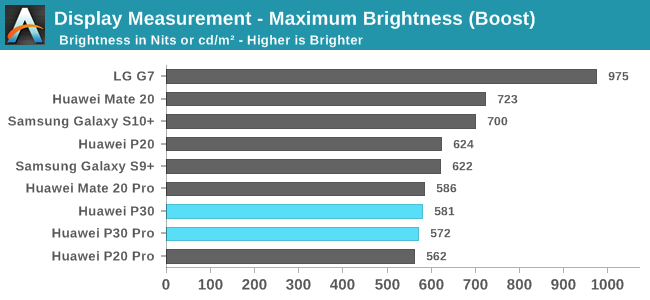
Sunlight legibility of both phones is excellent with auto-brightness boost brightness levels of up to ~570nits. Maximum brightness in manual mode falls in at ~415nits. In effect the brightness characteristics are in line with what we’ve seen in recent Huawei OLED devices.
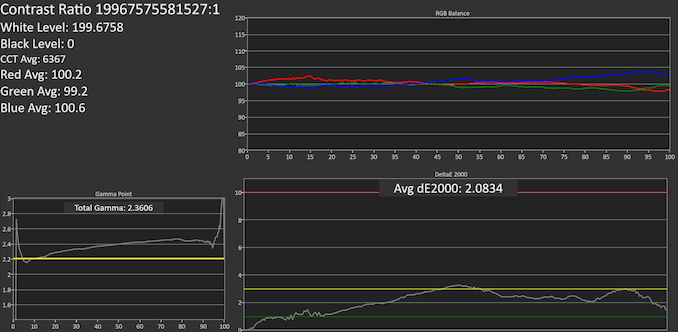
SpectraCal CalMAN
P30 Pro: P30:
Huawei doesn’t ship colour management on the P30s and still relies on its display modes. The “Natural” mode targets the sRGB colour space while the “Vivid” mode targets Display P3. Huawei provides colour temperature controls in both modes and you’re able to freely adjust RGB offsets. For the sake of the article we’re measuring the default presets, respectively the nearest preset that targets near a 6500K colour temperature.
In the greyscale accuracy test, both units have some weaknesses in terms of default colour balance. The P30 Pro comes in with an average 6367K CCT, however this isn’t very noticeable as at the higher levels it’s mostly more blue dominated. Most of the error comes from a higher gamma coming in at 2.36. It’s interesting that this gamma is merely high at our standard 200cd/m² measurement point, going to max brightness we see a much more perfect colour balance (except for the highest 10% levels) with a better gamma, but still seeing a non-linear gamma curve.
The smaller P30 has more issues in terms of its colour balance, here we see a strong dominance of green. This is fixable by adjusting the RGB balance. Like the P30 Pro, the P30 tends to have a too high gamma, showcasing also a more odd stepped response.

P30 Pro - Natural Default - SpectraCal CalMAN
P30 Pro - Vivid Warm - SpectraCal CalMAN
P30 - Natural Default - SpectraCal CalMAN
Colour temperatures across the devices and display modes are best in the default settings, even if they could be tweaked. The P30 Pro’s Vivid mode however is best used with the “Warm” preset.

Grayscale accuracy ends up better on the P30 Pro than on the P30. Both devices end up with deltaE2000 figures of 2-2.7, which is reasonable but not great either. The Mate 20 Pro had a notably better calibration, and the devices also fall behind the P20 Pro, but at least it’s not as disastrous as the Mate 20 or P20.
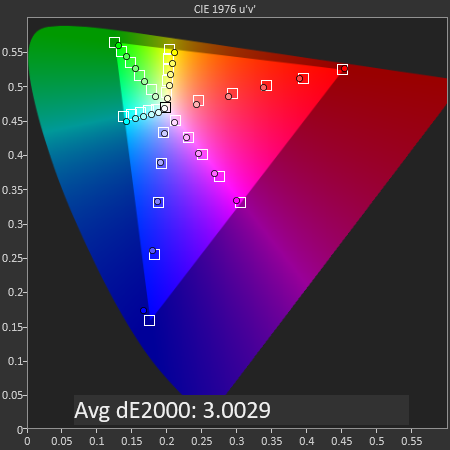

SpectraCal CalMAN
P30 Pro & P30 - sRGB 'Natural'
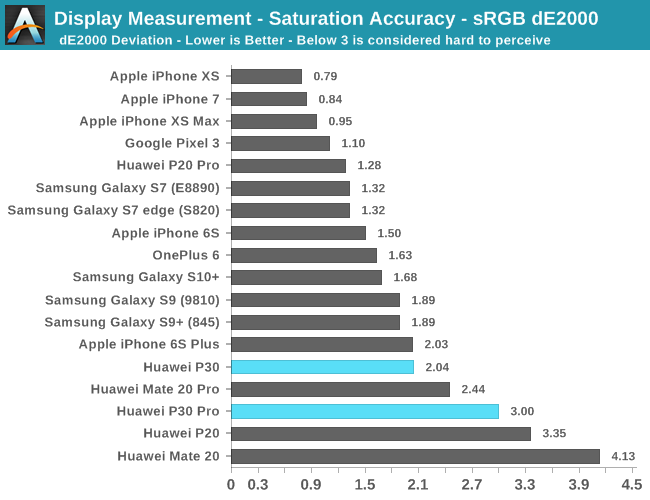
The saturation accuracy on both devices also fall in the dE2000 range of 2-3. The P30 fared better here as on the P30 Pro there was notable inaccurate hues in the yellow and cyan channels, as well as an off-mark blue primary.
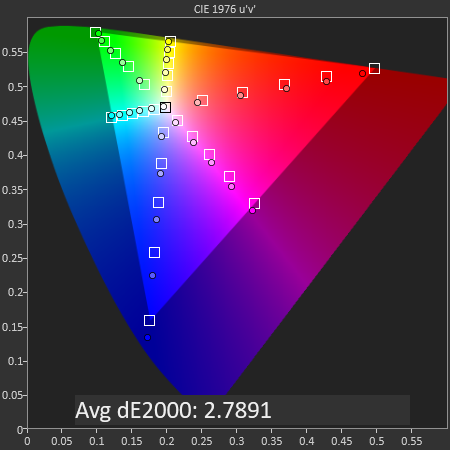
SpectraCal CalMAN
P30 Pro - Display P3 - 'Vivid'
Using Display P3 in the Vivid mode by definition isn’t actually a very accurate colour mode as the phone doesn’t have colour management adapted to the content. Nevertheless, the P30 Pro ended up with a dE2000 of 2.78. Here the biggest errors are in the blue primaries which overshoot the gamut targets, as well as saturation compression in the greens.
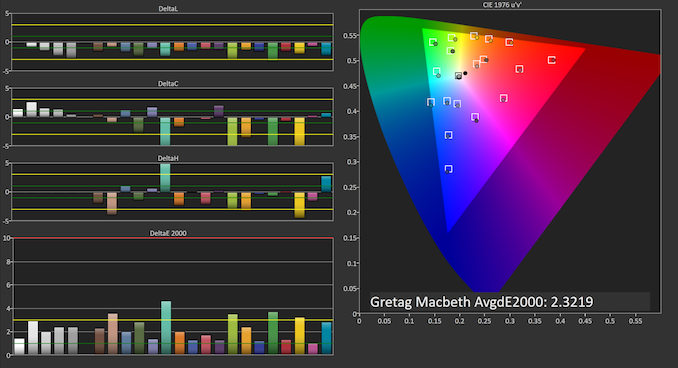

SpectraCal CalMAN
P30 Pro - GreTag MacBeth
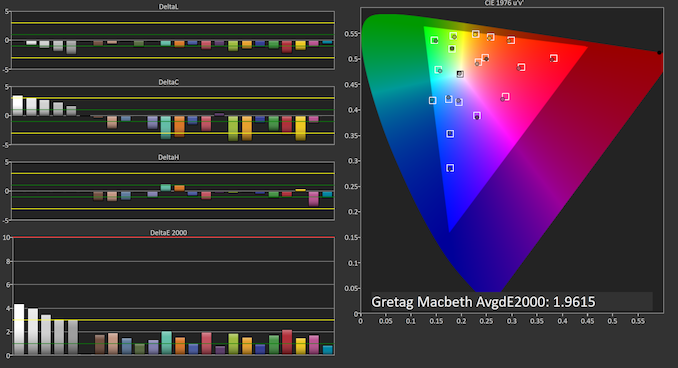

SpectraCal CalMAN
P30 - GreTag MacBeth

In the Gretag-Macbeth colour set of common tones and skin-tones, the P30 Pro ends up with a dE2000 of 2.3 while the P30 manages a better 1.96. The P30 fares better because of gamma/luminosity being nearer the targets, and while its chromacity error isn’t great, it has less severe outliers than the P30 Pro.
Display Verdict
Overall, both P30 screens are good. Their calibration isn’t top-tier, however they also don’t have any glaring issues, such as seen on the Mate 20 or P20. Thanks to the auto-boost function, their brightness is good for outdoor legibility, and the displays also don’t suffer from the weird exaggerated hue shift at off-axis angles such as the Mate 20 Pro.
If I were to criticise the panels in any way, it’s at least on the P30 Pro I would have expected to see a 1440p screen, like on the Mate 20 Pro. After the P30 launch event I was able to talk to Huawei’s VP of product marketing, asking about this precise aspect. I was a bit dismayed when the answer I got for the reason to stick to 1080p was battery life, with the VP insisting it makes a large difference. The Mate 20 Pro’s 1440p failed in terms of battery consumption simply because Huawei wasn’t able to implement it correctly, most notably relying on dual-MIPI DSI interfaces to drive it, instead of using compression with a single DSI interface. DDIC choice is also critical for battery life here; Samsung’s recent Galaxy S10 and S10+ showcase fantastic display power consumption at 1440p that is actually lower than both the P30s at 1080p. I hope in the future Huawei does finally figure out how to implement 1440p correctly, because I do think at screen sizes this big it does give a much needed quality boost, especially for a device that is priced as high end as the P30 Pro.


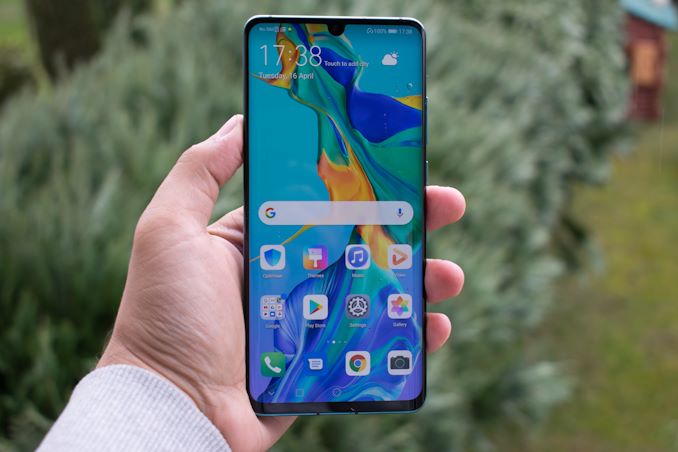








85 Comments
View All Comments
Quantumz0d - Thursday, April 18, 2019 - link
Good camera review, their auto mode looks good at night but the low light photography in smartphone arena is heavily faked. Be it Google insane algorithm for creating unnatural light or th damn Huawei night mode with HW. I think its too fake and perhaps they do have advantages in some situations but going from a dark room to a lit room is bad in my book.Next up the stupid curved glass copy they did from Samsung needs shaming. Plus its a waste that distortion of image is horrible and the damn construction is weak, see Jerry rig for it.
Then the worst parts - NanoSD ? WTF, please call them out for this, proprietary storages ? That's anti consumer, I use my SGS with 200GB SD card yes the 10Yr old phone with replaced battery and Fat32 works. And same in my iPods and V30S, and it works in PC without any stupid gimmicks or bloat.
Finally Andrei, I know your contribution to Samsung Exynos S9 disaster, it was only possible because it allows Bootloader unlock. That's the most powerful feature of Android and its principles of GNU GPL.
This Huawei junk is blocking access to that officially and in India I read the service centers demand DL for their Honor subsidiary, XDA portal people sold their soul to Huawei and OnePlus now their contract expired for OP and Huawei I guess. This is another massive hole in Huawei devices. I have every doubt about the firmware and SoCs from this CPC company I would really wish to have a Bootloader unlock for all their portfolio subsidiaries and themselves. Its bad, no ownership choice is horrible given how their EMUI blocks lot of stuff and notorious for its control over background processes.
You should include that in your reviews, please.
Thank you.
Quantumz0d - Thursday, April 18, 2019 - link
Also thank you for mentioning the 3.5mm jack and the stupid mono speaker in 2019. LG is Audio champion since a long time and hopefully they will retain that with their top class ESS Sabre implementation moving ahead. Also to note, LG and their new G8 has zero bumps which is a feat along with the Crystal Sound they call. Looking forward for piece.zeeBomb - Thursday, April 18, 2019 - link
You guys should take a look of MrWhoseTheBoss and his videos about this amazing phone. Such a shame you can't get it in carriers in the Americas, but man oh man.Ian Cutress - Thursday, April 18, 2019 - link
>You guys should take a look of MrWhoseTheBoss and his videos about this amazing phone.Any specific reason? You haven't exactly said why.
zeeBomb - Monday, May 6, 2019 - link
My bad. Sorry for the late reply too, he talks primarily about the sensor of the P30 Pro and its usefulness in Low Light. Just a suggestion to take a look.bogda - Thursday, April 18, 2019 - link
I think this statement: "...Huawei continues the senseless design choice of including a headphone jack on the smaller model while skipping it on the larger and more expensive P30 Pro.", makes much more sense if it is changed just a little bit into:"Huawei continues the senseless design choice of skipping a headphone jack on larger and more expensive P30 Pro while including it on the smaller model."
Awful - Thursday, April 18, 2019 - link
Great review but still missing half the picture when it comes to the camera. Time-of-flight sensor? Graduated blur based on depth map? Portrait/face lighting? People are the most photographed and most interesting subjects. Even if it's a mannequin with a wig for repeatability!s.yu - Friday, April 19, 2019 - link
Portrait lighting has been gimmicky for a few generations now. Regarding ToF, IIRC only the Nokia 9 has the proper implementation. Still there are pixel grade deviations and some people aren't satisfied. Personally if I were to add fake bokeh that precision would be enough for me.Awful - Saturday, April 20, 2019 - link
Yeah, they weren't really meant to be separate concerns- they're all factors contributing to portraits. I.e. how the exposure is chosen, how the depth is mapped to the bokeh/blue, how edge detection is done and masked for blurring, how AI/ML is used to make adjustments etc. All great computational photography stuff...that this review is silent on.Lau_Tech - Friday, April 19, 2019 - link
Hi Andrei, as a s10 exynos owner, was interested to see your updated comparison pics between the snapdragon and exynos. Looking at the pics from ur S10 review and now, it seems to me that the gap has closed substantially especially in daytime photos? What do you think?